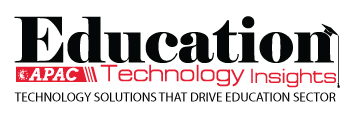THANK YOU FOR SUBSCRIBING
Be first to read the latest tech news, Industry Leader's Insights, and CIO interviews of medium and large enterprises exclusively from Education Technology Insights
Utilizing Creative Avenues for Student Engagement In Technology Education
Megan Aebi Opeña, STEM Director, Pratt Institute
As an educator, I am constantly looking for creative ways to engage students in the classroom. When it comes to technology, some scholars are more eager to learn than others. Gadgets and coding call their names; future visions of robotic overlords, or at least ones who could do their homework, dance in their heads. For others, 3D printing is about as interesting as watching paint dry.
So, how do I engage kids who are not curious about the potential of drones or laser cutters? Most often, I find that leaning into the A for ‘art’ in STEAM is the gateway to engaging students in technologies that they previously would not have been interested in picking up.
For example, while supervising a middle school robotics club, I noticed that there was a young woman sitting in the corner with her arms and legs crossed. Her entire body language was screaming to get her out of there. While a cohort of her fellow students were gleefully programming robots, she was glaring a hole into the wall. I took a knee to get down on her level and asked her if she was interested in joining her friends. She made it very clear that she wasn’t going to touch those ‘stupid robots.’ Fair enough.
"I firmly believe that arts education, paired with STEM, creates a stronger foundation for future creativity and development"
I happened to have some 3D printing pens, usually pretty popular with middle schoolers and asked if she had tried one before. She said they were stupid and were not interested. So, I made one last pitch and asked her what she was interested in. Cats. She loved cats. After a 5-minute conversation on the brilliance of felines, I brought over the 3D pens and started doodling a kitty cat ring for her. She picked up the spare pen and started to make some herself. She was initially frustrated, but we talked through it, and then I left her to explore a bit by herself. When I came back to check on her, I found an engaged student, creating something that really mattered to her. Eventually, I introduced the idea of 3D printing, and we launched into a study that taught her SketchUp and grew her interest in technology.
A few things that were important in that interaction: (1) I met her where she was at and got on her level physically taking a knee and asking her about her life; (2) I introduced her to technology that met her interest and gave her the option to participate, without forcing her; and (3) I gave her the time and independence to explore the technology on her own. I was able to hold space for the student, give her some individualized attention, and help her engage in a classroom activity that was previously uninteresting.
This is one of many examples of meeting scholars where they are at and pinpointing an access point to high-quality education tailored to the individual. Students deserve respect, options, and time to adapt to new technology, just as adults do. Utilizing STEAM as an avenue to encourage scholars to try new things in the classroom has led to students reporting they are more satisfied with activities and interested in pursuing STEM careers in the future. I firmly believe that arts education, paired with STEM, creates a stronger foundation for future creativity and development. Not all kids need to be excited by drones, but if I can get a kid interested in drawing an aerial view of her backyard or mapping out his favorite park while introducing them to drone technology, then I have made a connection with a scholar and given them knowledge that they might have previously felt disconnected from.
Read Also
Empowering Educators through Purposeful, Connected and Transformative Learning
Empowering Students to Lead: A New Vision for Civic Learning
The Director's Playbook: Strategic Digital Transformation in Rual Hyper-Growth Districts
The Art and Architecture of Student Support
From At-Risk to At-Promise: The Language Revolution Higher Education Needs
Teaching Tomorrow: How Western Governors University Is Redefining Teacher Preparation

I agree We use cookies on this website to enhance your user experience. By clicking any link on this page you are giving your consent for us to set cookies. More info






















